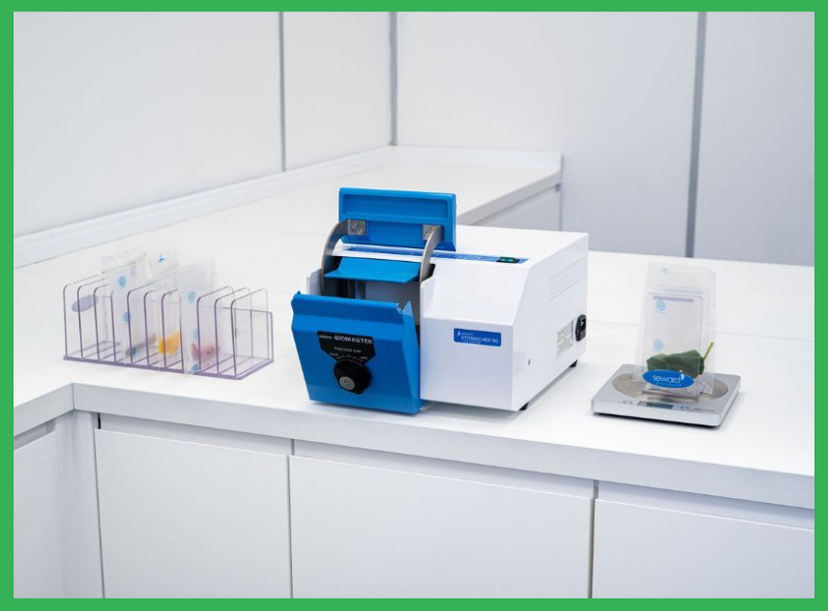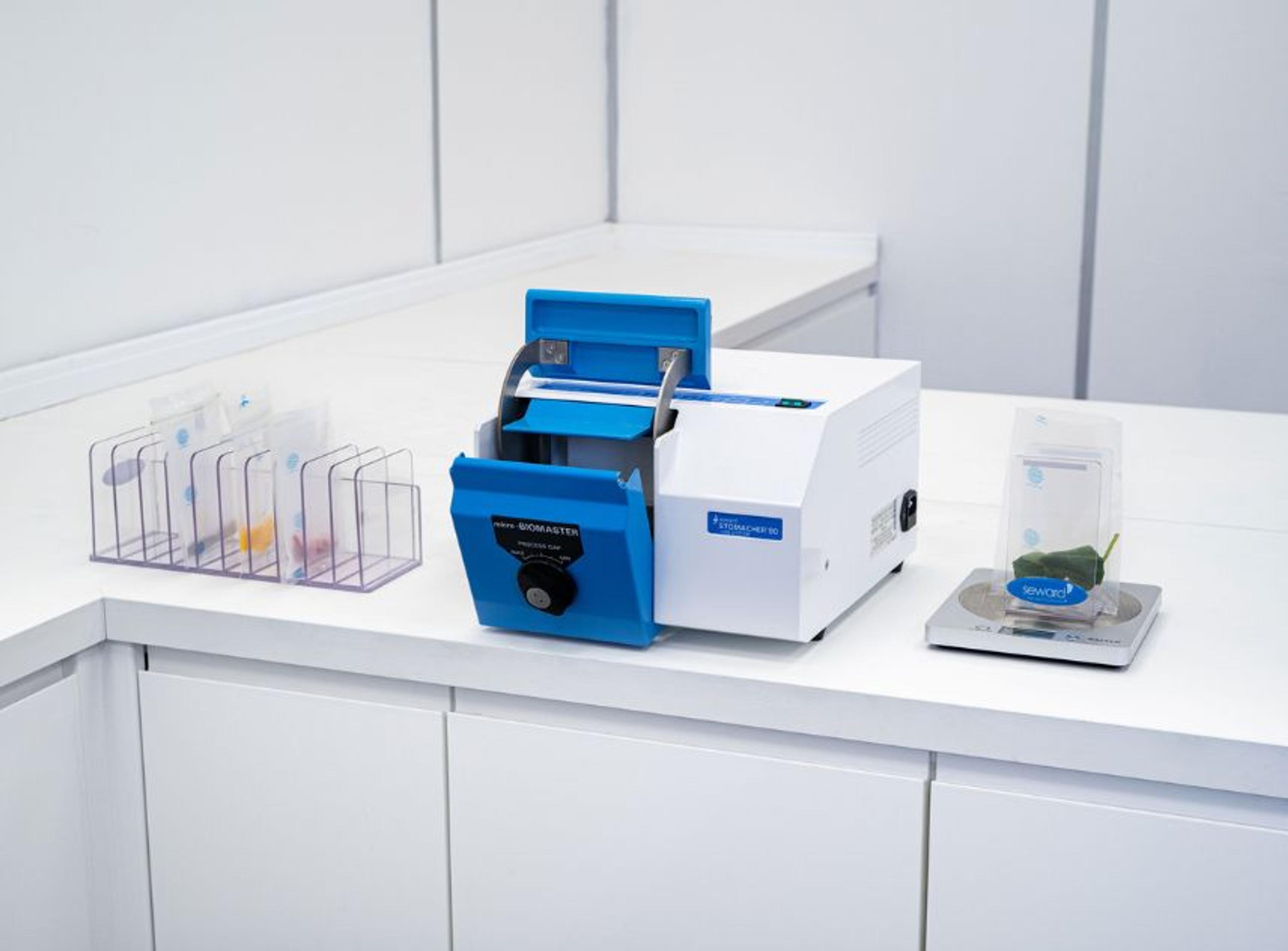Tools for drug discovery and pharma development
In this guest editorial, discover how technologies like Seward's Stomacher lab blenders are advancing modern medicine
20 Sept 2024
The Stomacher® 80 microBiomaster Lab Blender by Seward Ltd
Pharmaceutical development is an intricate and highly dynamic process that spans everything from the discovery of new compounds to the repurposing of existing drugs for novel therapeutic uses.
The sources of innovation can be diverse, sometimes originating from a breakthrough discovery of a compound extracted from a rare rainforest orchid, or from the strategic decision to apply an existing treatment to a new condition based on promising data. While the former may evoke images of a 'eureka moment' in a laboratory, the latter — repurposing known drugs for new purposes — is often more cost-effective and time-efficient due to the wealth of existing research, clinical data, and established safety profiles.
However, both paths require researchers to leverage a diverse array of tools and technologies to effectively develop treatments, and to translate these ideas, observations, and materials into viable medical therapies.
One of the most notable examples of repurposing a drug for new uses in recent times is the case of dexamethasone during the COVID-19 pandemic. Initially developed and used as a corticosteroid for reducing inflammation in a range of conditions, dexamethasone was found to significantly alleviate severe respiratory symptoms in patients with COVID-19, particularly those who were critically ill. This discovery proved to be a turning point in the treatment of the virus, saving many lives during the pandemic.
The success of dexamethasone as a COVID-19 treatment demonstrated the immense potential of repurposing existing medications, which can often be brought to market more swiftly and affordably than developing entirely new drugs from scratch. Such instances also highlight the critical role that data from years of prior usage and clinical trials can play in the rapid identification of new therapeutic applications.
The journey of pharmaceutical discovery, whether for a new or repurposed treatment, typically begins with the extraction and initial testing of compounds derived from a wide variety of sources. These sources can be animal, vegetable, mineral, or fungal in origin, as the natural world offers a vast array of potentially bioactive compounds that can be harnessed for therapeutic purposes.
The early stages of development involve rigorous testing to evaluate both the efficacy and safety of these compounds. Researchers employ a range of sophisticated techniques to monitor how drugs are metabolized in the body and where they ultimately distribute within tissues. This critical stage is key to ensuring that a potential drug not only works effectively but also avoids causing harm through toxic side effects or poor bioavailability.
At the heart of the pharmaceutical research process is sample preparation, a fundamental stage that underpins the accuracy and reliability of experiments. Properly prepared samples are crucial for maintaining the integrity of the testing process and ensuring valid results.
Tools like Stomacher® lab blenders have become integral to sample preparation in both research and development settings. Stomacher blenders are used to process a variety of biological materials, making them useful in a wide array of pharmaceutical research applications.
One of the key advantages of using Stomacher blenders is that they allow for sample containment, which minimizes the risk of cross-contamination — a common concern in laboratories where maintaining sample purity is paramount. The system is also highly efficient, allowing researchers to prepare samples quickly and with minimal risk of errors. This combination of safety and efficiency makes Stomacher lab blenders invaluable at all stages of pharmaceutical development.
The Stomacher 80, is widely referenced in scientific literature and is frequently used in published studies across various fields. Its applications are particularly noted in cancer research, where sample integrity and contamination-free processing are critical for testing the effects of potential new cancer therapies.
Toxicology is another field where Stomacher blenders are commonly employed. Here, they are used to prepare tissue samples for analysis, helping researchers identify the potential toxic effects of new compounds. The ability to prepare samples accurately and safely in this context is crucial for ensuring that only safe, effective compounds advance to later stages of drug development.
Additionally, tissue culture, a process that involves growing cells or tissues in controlled environments, also benefits from the use of Stomacher blenders, as they ensure that the samples used in these cultures remain free from contamination.
Beyond traditional pharmaceutical research, Stomacher lab blenders have also found a growing niche in the emerging field of the microbiome, where they are used in both research and production settings. The microbiome refers to the vast community of microorganisms that inhabit the human body, many of which play critical roles in health and disease.
In particular, Stomacher blenders have been employed in research on Clostridium difficile (C. diff), a bacterium that can cause severe gastrointestinal infections, particularly in hospital settings or after antibiotic use. Stomacher technology is used to process samples for testing potential treatments for C. diff, as well as to prepare materials for fecal microbiota transplantation (FMT), a procedure increasingly used to treat recurrent C. diff infections by restoring a healthy gut microbiome.
In the area of post-operative care, Stomacher blenders have been utilized to process biological materials for testing new treatments designed to prevent or mitigate infections following surgery. This is particularly important in cases where infection control is paramount to the patient’s recovery.
Additionally, Stomacher technology plays a significant role in the preparation of transplant material, ensuring that samples are processed safely and effectively. The NHS Quality Control (QC) department utilizes Stomacher blenders specifically for transplant material preparation, further underscoring the system’s utility in high-stakes, life-saving medical applications.
In conclusion, whether through the discovery of new compounds or the repurposing of existing drugs, pharmaceutical development is a complex and multifaceted process. Tools like Stomacher® lab blenders are essential in ensuring that each stage of research, from sample preparation to final testing, is carried out efficiently and safely. Their versatility across a wide range of applications, from cancer care and toxicology to microbiome research and transplant preparation, highlights their critical role in advancing modern medicine.
The content for this guest editorial was provided by the team at Seward Ltd.
Want the latest science news straight to your inbox? Become a SelectScience member for free today>>

